POLITECNICO DI MILANO, POLICY DESIGN STUDIO, A.A. 2017-2018_ Professors: Alessandro BALDUCCI, Antonella BRUZZESE_ Tutors: Elena BATUNOVA, Beatrice BELLE’, Gianluca NARDONE_ Students: Jiabin WEI, Mariaemma SALA.
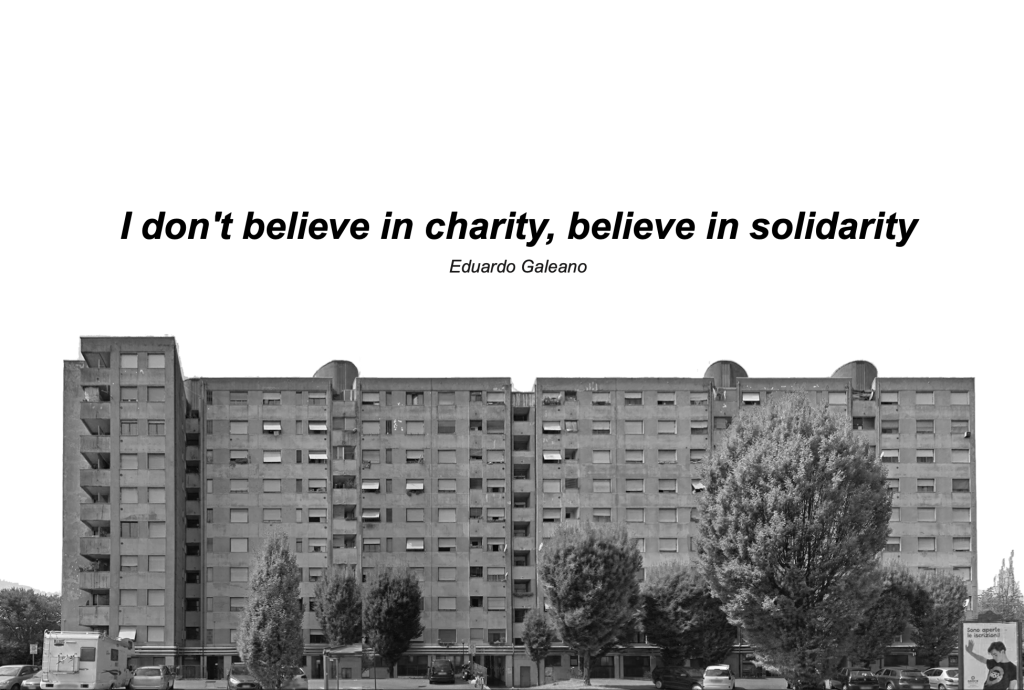
What is Case Bianche?
Case Bianche is a social housing that locates in the south-east suburb area in Milan. The surrounding lands are used in many different ways, such as factories, warehouses, residential buildings, abandoned empty lands and so on. Casa Bianche is a typical case of the degradation and segregation of Milan suburbs. The whole area is just like a broken glass. Even though different blocks are close to each other, there is a lack of interconnection and a sense of community as a whole.
The building Case Bianche is symbol of poverty and social segregation in this area. Even after the visit of the Pope, the situation still remains the unchanged. Building Case Bianche hosts more or less 1000 people in 400 different apartments. it is necessary to underline that:
– the immigrant are the 40 % of the population of the building
– the percentage of unemployment is 20 %
– the 15% of the inhabitants has criminal records
– the 25 % of the apartments are controlled by a criminal racket.
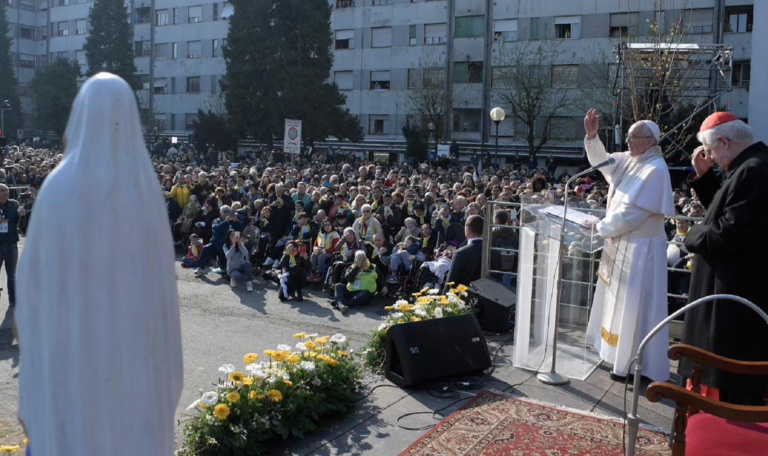
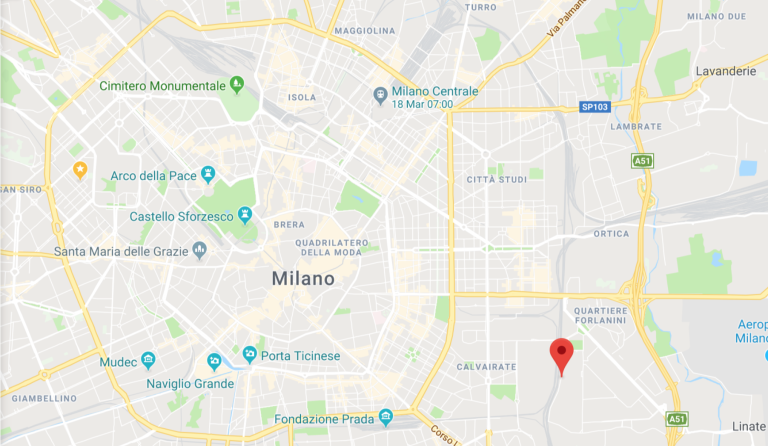
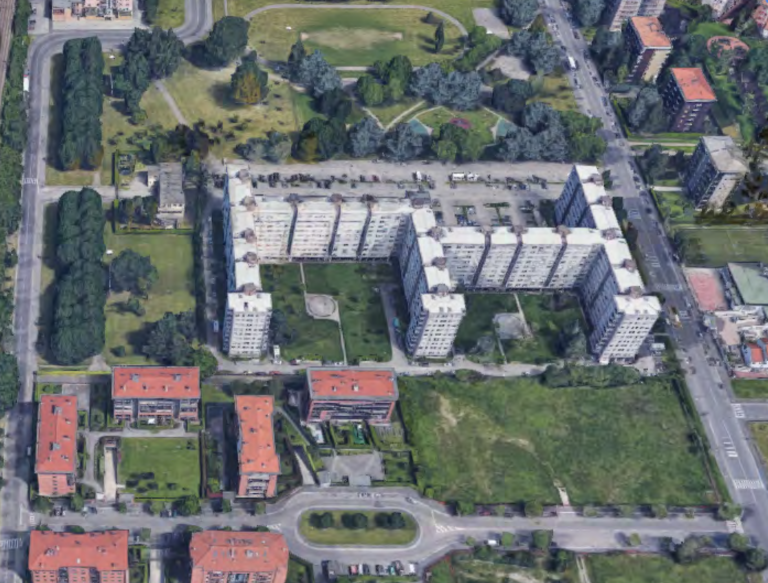
Case Bianche vicious degradation circle
The municipality has tried several times to relocate the people in the buildings and rebuild the building to improve the living environment and blend the residents into the society again. All the attempts ended in failure.
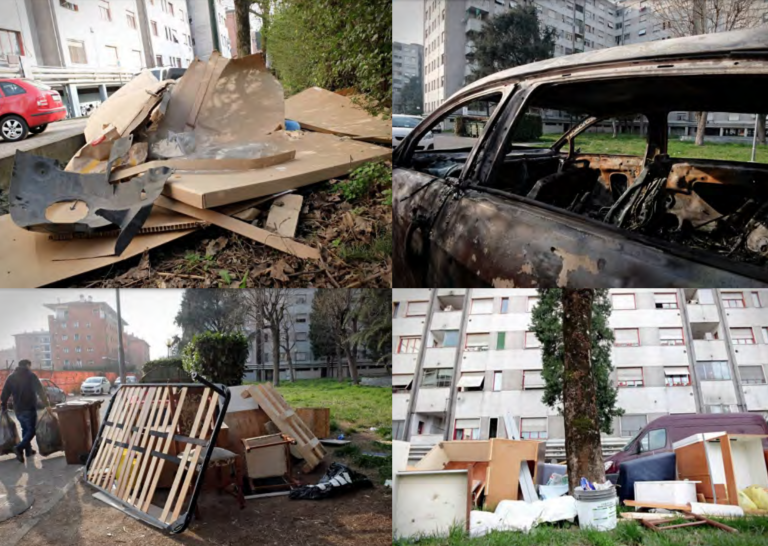

How to break the vicious circle?
In this project, we introduce the concept of urban solidarity into the rebuilding process of Casa Bianche area. The policy will involve different actors and neighbor areas. Unemployed residents in the Casa Bianche could voluntarily participate in the construction process of the new Casa bianche and design their own public space as well. A connection would be added to connect the abandoned green space, new Casa Bianche and the new projects in the south part. In this way, not only there would be new customized open spaces in the area, but also the people would have an emotional connection to the space and a sense of community would be gradually sprouted.

Key actors:
Considering the physical problems of Case Bianche inhabitants, the presence of vacant places and the problems related to them, our policies involved different actors and is composed by different steps.
The different actors involved in this phase and their characteristics are:
– inhabitants of Case Bianche that is a social actor that act in a local scale, this actor has politic resources because, considering the pro- blematic situation and the interest of the public opinion about it, it is able to attract the interest of the population; its role is to collaborate with the institution to define the best policy of the process.
– ALER, as owner of Case Bianche and owner of the area A and developer of the new area in the area B, it is a economic-political actor that act on a regional scale, it has economic and political resources and it is responsible of demolish Case Bianche and develop a new project for the relocation
– Municipality of Milan has the role to develop policy that works in favor of the issue of Case Bianche and help in the first financial investment, as the new development of CDP immobiliare (area C); it is a local actor and its resources are economic, political and legislative.
– Municipality of Milan or Fondazione Calipro (as investor) as developer of the new social housing building from people of Case Bianche in the area A; they are economic actor because they have to use their economic resources to make their own investment in the abandoned empty lands and guarantee a percentage of affordable housing units for people from Case Bianche
It is important to say that the area A was firstly given to ALER by the municipality, for a new de- velopment that could hosts people from Case Bianche during the regeneration of the building but, considering that the ground was polluted the works were stopped because of the necessity of decontamination; considering also the financial difficulty of ALER it is difficult to con- sider the possibility to continue this idea, also because the trust of Case Bianche towards the proposal was very low.
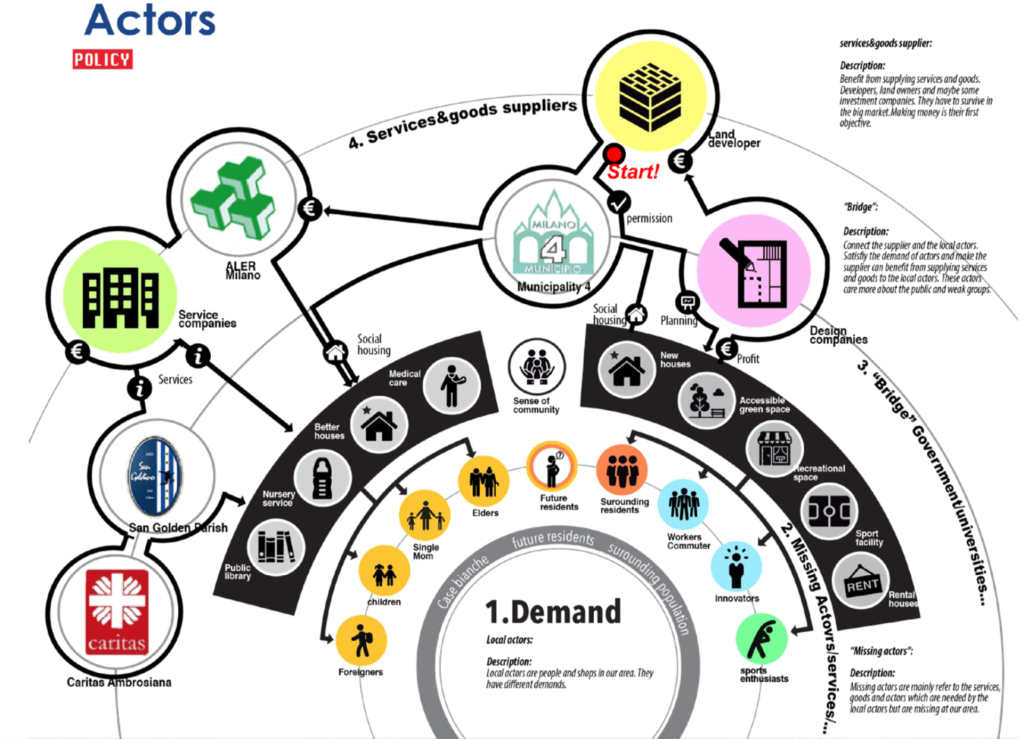
Process:
In the whole process, all the actors interact with each other: The municipality plays a crucial role to organize and balance all the actors to solve the problem in the same direction.
The residents in Casa Bianche can not only change new houses, but also gain opportunities to get new jobs. There are some activities which need the cooperation between the residents in the process. In this way, we hope a social cohesion will rise after years of segregation.
ALER and other profit developers will earn money from the new project and at the same time, will receive special tax reduction policy from municipality.
We also consider the reuse plan of the abandoned school in the long term development. As the resident in Casa Bianche finish relocation, the retired people and the children can participate in the formulation of the plan.
In the end, after combining all the strategies and actions of different actors, we get this complex but explicit time line.

Design guideline:
Along with the policies of rebuilding the area, an urban design guideline is proposed to make sure the physical construction is in the right way. The guideline is mainly consisted of 3 basic strategies.

Diversify house types
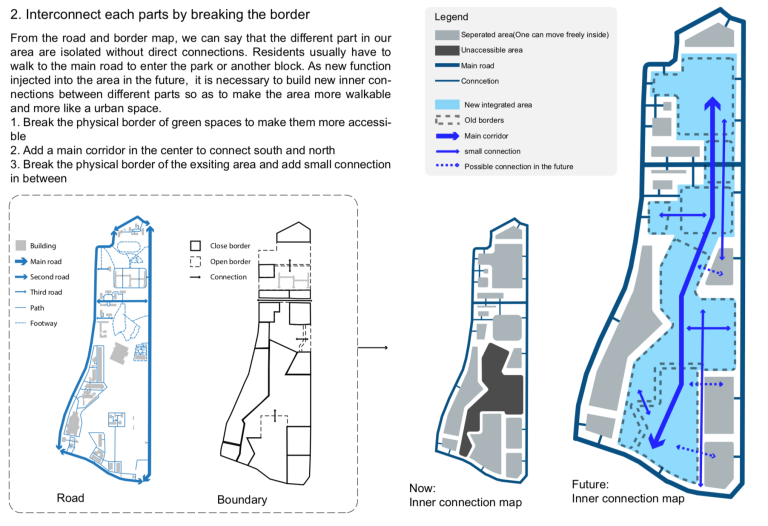
Break borders and share green
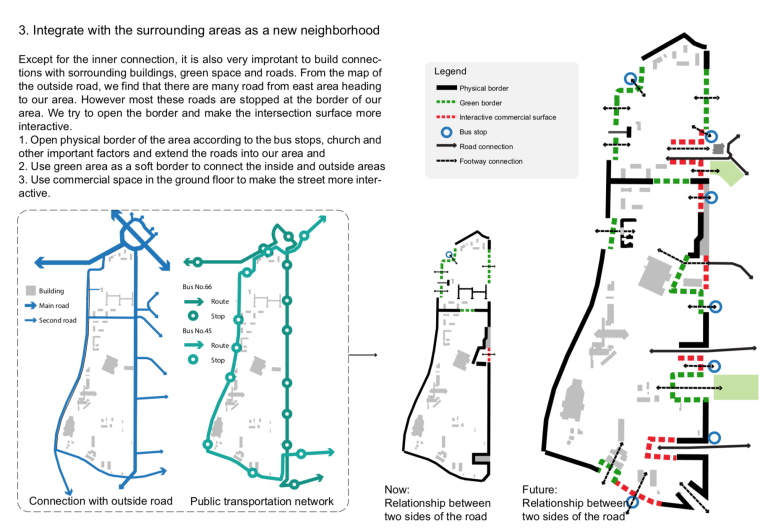
Create a new neighborhood
